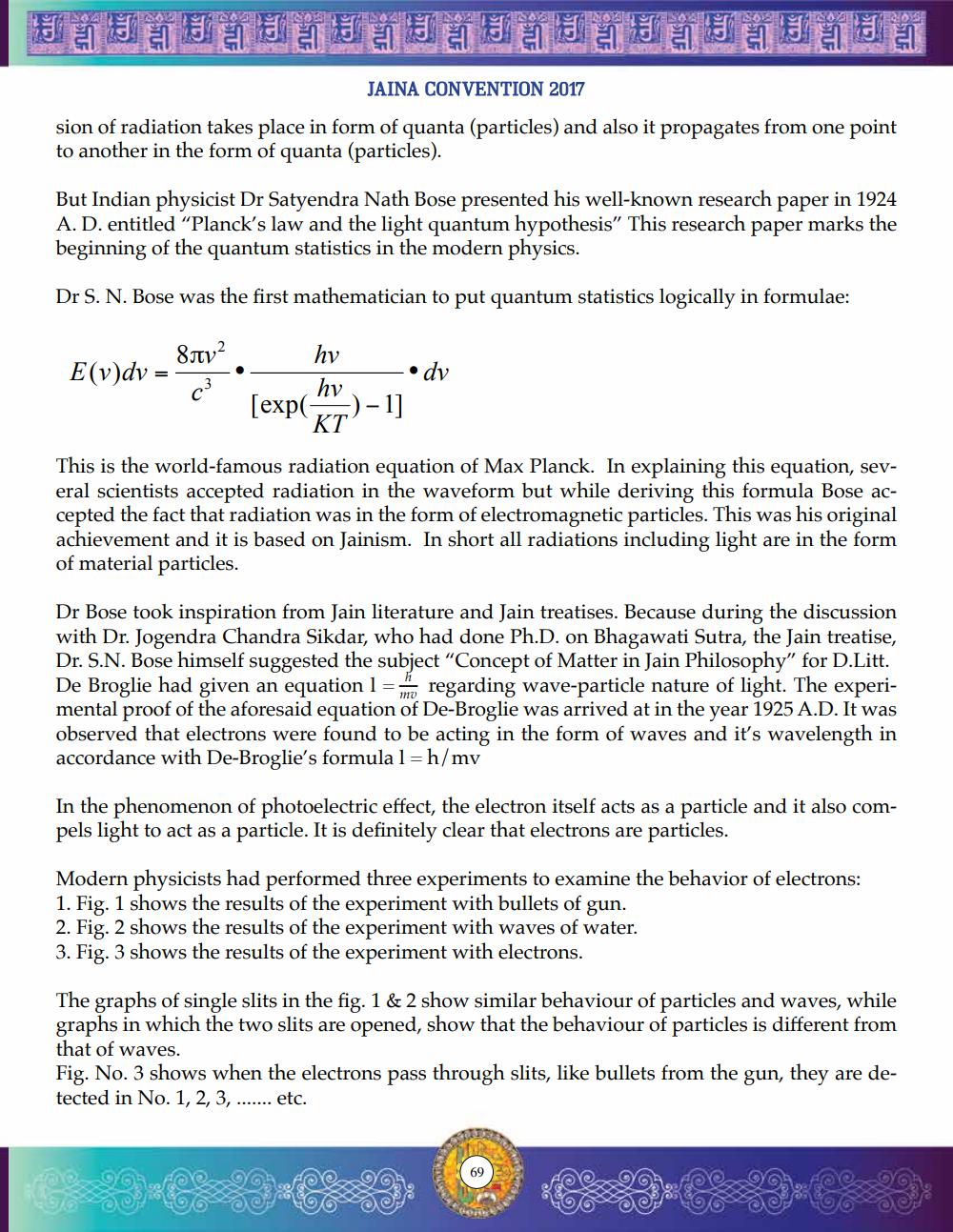________________
Ha Ha Ha Halalala lalalad da
JAINA CONVENTION 2017
sion of radiation takes place in form of quanta (particles) and also it propagates from one point to another in the form of quanta (particles).
But Indian physicist Dr Satyendra Nath Bose presented his well-known research paper in 1924 A. D. entitled "Planck's law and the light quantum hypothesis" This research paper marks the beginning of the quantum statistics in the modern physics.
Dr S. N. Bose was the first mathematician to put quantum statistics logically in formulae:
E(v)dv:
=
δπι2
hv
hv
KT
[exp(
•dv 1]
This is the world-famous radiation equation of Max Planck. In explaining this equation, several scientists accepted radiation in the waveform but while deriving this formula Bose accepted the fact that radiation was in the form of electromagnetic particles. This was his original achievement and it is based on Jainism. In short all radiations including light are in the form of material particles.
Dr Bose took inspiration from Jain literature and Jain treatises. Because during the discussion with Dr. Jogendra Chandra Sikdar, who had done Ph.D. on Bhagawati Sutra, the Jain treatise, Dr. S.N. Bose himself suggested the subject "Concept of Matter in Jain Philosophy" for D.Litt. De Broglie had given an equation 1 = regarding wave-particle nature of light. The experimental proof of the aforesaid equation of De-Broglie was arrived at in the year 1925 A.D. It was observed that electrons were found to be acting in the form of waves and it's wavelength in accordance with De-Broglie's formula 1 = h/mv
Mv
In the phenomenon of photoelectric effect, the electron itself acts as a particle and it also compels light to act as a particle. It is definitely clear that electrons are particles.
Modern physicists had performed three experiments to examine the behavior of electrons: 1. Fig. 1 shows the results of the experiment with bullets of gun.
2. Fig. 2 shows the results of the experiment with waves of water.
3. Fig. 3 shows the results of the experiment with electrons.
The graphs of single slits in the fig. 1 & 2 show similar behaviour of particles and waves, while graphs in which the two slits are opened, show that the behaviour of particles is different from that of waves.
Fig. No. 3 shows when the electrons pass through slits, like bullets from the gun, they are detected in No. 1, 2, 3, ....... etc.
69




